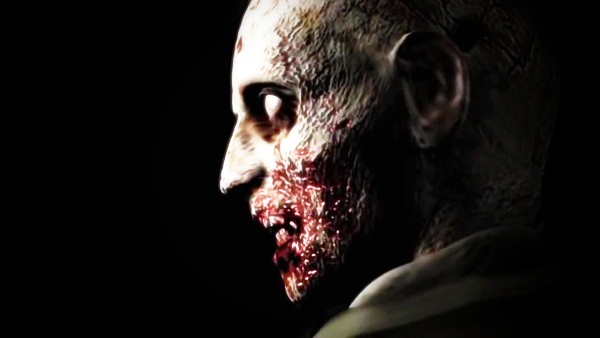
There is a long standing argument that in order for a piece of interactive entertainment to be a videogame, it must be fun. However there is an inherent fallacy to this sort of mentally, as survival horror is one of the oldest genres in gaming and the goal of the genre is not to make sure people have fun, but that they feel fear. In 1996 the original Resident Evil taught us that videogames could evoke so many more emotions than just enjoyment or pleasure. Since that game, the genre has continued to refine and perfect everything that it did right. The most obvious example of this is the 2002 remake of Resident Evil for the Nintendo Gamecube. Resident Evil 2002, or ‘REmake‘ as it’s been called by most fans is often cited as a textbook example as to what a survival horror game should be. That is due to how it nails the proper atmosphere, balances difficulty accordingly, acknowledges the importance of reprieve in horror, features a story that accentuates the gameplay, and brings all these elements together better than any other survival horror game.
Note: For the rest of this article, I’m going to continue to refer to Resident Evil 2002 as ‘REmake’ to avoid confusion with the original game. Also: Slight spoilers.
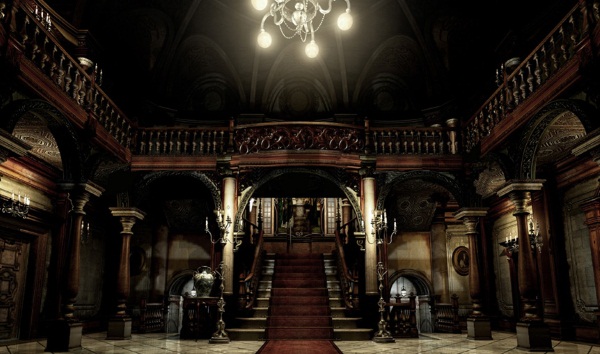
Atmosphere has become a bit of an abstract concept in gaming mainly because it’s used so liberally when describing how an environment in a game makes the player feel. Personally, I believe it is something that developers use to drive home the setting, tone, and mood of a game. In the case of REmake, the game looks to set a lonesome feeling throughout, starting with the very opening cutscene. Players are given all the information they need regarding the plot in about 3 minutes time; you’re a member of a special forces police unit looking into a series of grisly murders. The game doesn’t want you to be thinking about a complicated back story, it wants you to focus on feeling helplessness. There’s a section of this cutscene that just features the protagonists running from a pack of dogs for several moments. While it may seem like just a chase scene, it establishes just how far away from civilization and safety the STARS team is. They’re bolting from rabid dogs in a pitch black forest, their helicopter pilot has left them behind, and their only chance at safety is an abandoned mansion in the middle of nowhere. This cutscene lays everything out for the player in a concise but effective manner; you and your team are alone, murders are involved, some of your friends are missing, and there are monsters outside preventing you from leaving. All of this serves a very specific purpose: to make the player feel isolated and cut off from the rest of the world.
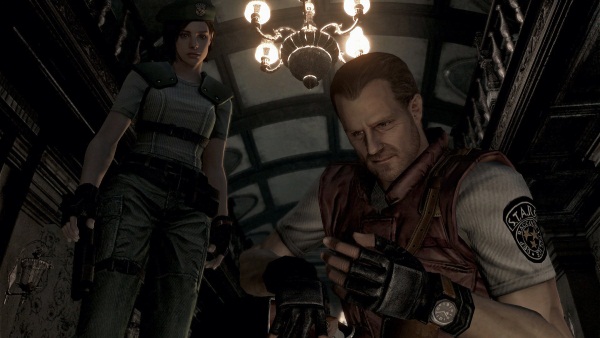
The mansion players have just entered is anything but safe, as you have quite literally just entered the world of survival horror. The Spencer Mansion itself is probably the primary reason why Resident Evil and REmake have resonated with players for nearly two decades. The labyrinthine level design makes it feel like a massive undertaking to explore while simultaneously feeling cramped and claustrophobic. What makes the Spencer Mansion so unsettling is how it feels like a real, lived-in place; at the same time it feels like a perversion of reality. All of the booby traps, monsters, puzzles, and absurd amount of hidden nooks and crannies obviously would never exist in the real world. However, it is the attention to detail and environmental storytelling that really sells the mansion on feeling like a real place. Almost every room feels lived-in due to the clutter, notes, and various items scattered about. A great example of this is a living quarters early in the game. There’s nothing particularly noteworthy about it in terms of useful items, but if you examine the bed you’ll notice it looks as though someone was walking on it and passed right through the wall next to the bed. It’s something that has always stuck with me cause I’ve never been able to make heads or tails of what the developers were insinuating with this tiny detail. There’s a good chance it is there only to mess with the player’s mind and make them feel uncomfortable, which just shows how brilliant the level designers were when making the game. The game is just teeming with tiny details put there by the developers to unnerve the players.
The lived-in quality of the Spencer Mansion in REmake was elevated well above that of the original Resident Evil. The mansion in Resident Evil looks far too barren and clean for a supposed “world of survival horror”, or at least it does by today’s standards. Naoki Katakai was the art director for REmake and is probably largely responsible for the intimate level of detail in the game’s environments. Something that a lot of modern games suffer from, including recent Resident Evil games, is a lack of grit. The Spencer Mansion in REmake is a dirty, dusty, old, decrepit, and miserable looking place – but in a good way. The way floorboards creak and how dust is often kicked up when you walk around is again all part of how the developers sell it as a real place. By making the mansion feel real and tangible, it’s all the more scary when you come across something unnatural. All fears no matter how irrational they may seem are rooted in reality, and the atmosphere of the Spencer Mansion is this mentality embodied in game form.
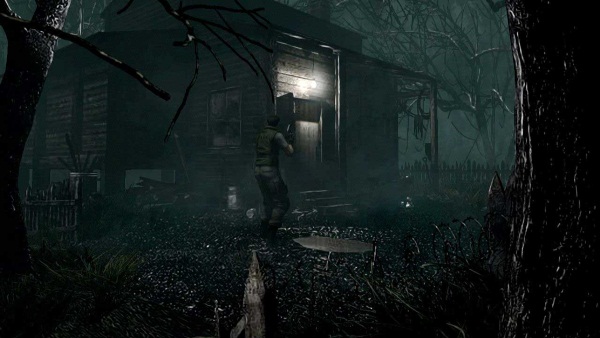
One of the aspects of designing a horror game that is most difficult for developers is balancing the difficulty. If your goal is to make people afraid, you don’t want to make it too hard because players might get frustrated and the immersion will be broken. At the same time, however, a horror game should never be too easy either. If the enemies/puzzles in the game are a cakewalk then there’s no reason to be intimidated by them. Be it too hard or too easy – go too far in either direction and your game probably isn’t going to be scary.
Yet again this is something that REmake does so successfully that it makes it look as though there was no difficulty hurdle at all for the developers. Most people will tell you that REmake is a very tough game, and on the Normal difficulty setting (Mountain climbing) it is indeed quite a challenge. It’s a tough game but at a no point is it unfair, at least not on Normal or Hard. If you pay attention to the notes, plot, environmental storytelling, and tips you can minimize your death count significantly. For example, most first time players will say that the Crimson Head Elder boss fight is very brutal on a first playthrough. If you’ve been paying attention to the notes and have been burning the zombie bodies, you already know that Crimson Heads are weak to fire. That applies to the Crimson Head Elder as well. In Jill’s case, if you load the fire rounds into your grenade launcher then this fight will be incredibly easy. When it comes to the enemies, REmake is all about knowing what tool to use for the job and when.
Since I touched briefly on Crimson Heads, I feel it is important to elaborate how brilliant this enemy type is. If you’re not familiar with the game, a Crimson Head is basically what happens to a zombie if not properly disposed of. There’s so much backtracking in the older Resident Evil games that once you had cleared a room of enemies, that was it; you were safe. REmake spiced things up a bit and really shook experienced Resident Evil players to their core. Basically, if you kill a zombie and don’t blow off its head or burn its body, some time later it’ll come back to life as a Crimson Head. Unlike zombies they are slow and aimless, Crimson Heads can sprint after you and are far more aggressive, not to mention tougher to kill than a traditional zombie. This forces players to carry around a flask of kerosene (and a lighter in Jill’s case) in order to burn zombie bodies. In a game where the inventory is so limited and management is important, you run the gambit of either just fighting Crimson Heads later or have the flask eat up inventory space. It is just another way how the developers didn’t want players to feel safe in rooms they had already visited.
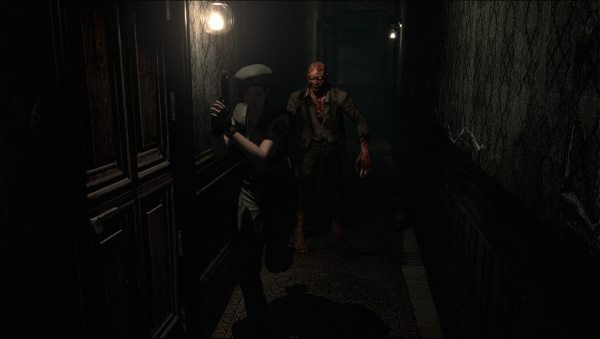
Puzzle difficulty similarly strikes a very healthy balance. Survival Horror games from the late 90’s and early 2000’s often had very obtuse puzzles that required the players to consult walkthroughs, because the information needed to solve the puzzles were straight up not available in the game (I’m looking at you Silent Hill 3 Shakespeare puzzle). REmake’s puzzles and progression is often very sequential, you need to do a lot of actions in the right order to progress further. It’s a good system that often leaves you feeling satisfaction at a healthy pace. More importantly than that though, there’s never a point in REmake where the solution isn’t visible in the game.
In any sort of horror or dramatic media, it is important to give the audience a moment of reprieve. The reason for this is if you bombard the viewer, reader, or player with nothing but an oppressive atmosphere then it starts to lose its affect after a while. For example, in Amnesia: The Dark Descent the game initially starts out very scary, but it never lets up on the tension and after a while you get used to it and it gets kinda boring. Resident Evil creator Shinji Mikami has known this since he directed the very first game. This is primarily what the purpose of the save rooms are: to offer the players a reprieve. REmake does this better than any other game in the series before it as well. The save rooms are often littered with welcoming, warm colors of candlelight coupled with a the relaxing song “Save Heaven“. The save rooms give you a brief moment to relax after all the stress that the rest of the Spencer Mansion can cause, but they’re also there so that you don’t get comfortable with the rest of the environment. You could argue that most of the games in the core series do this, but REmake surpasses the rest of them in my opinion due to how much better the score and art direction is.
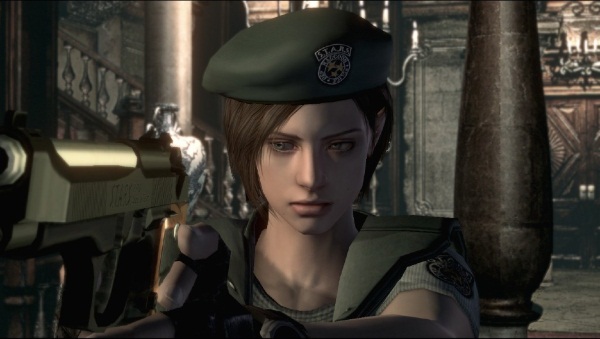
This next part is sure to make a few people upset, but it needs to be said: the Resident Evil games are not well written. The characters are often lucky to be stereotypes at best, and they almost never grow and change as people. More than that though, the plot for almost every game is identical: Virus gets lose, characters are stuck in the middle of the chaos and must find their way out, and there’s an explosion at the end. REmake‘s narrative is by no means great; it’s essentially just a silly B-movie. There’s nothing wrong with that, though. In fact, I’d gladly take a B-horror movie presentation over the comical melodrama and “saving the world” nonsense of the later games in the series. REmake actually has an air of mystery to its plot, mostly because it helps the mansion seem more uncomfortable, but it works. Unless you had played a Resident Evil game previously, you have no idea where the monsters in the mansion come from or what exactly the mansion even is. It all ties into the fear of the unknown, which of course is the basis of all fear.
The best writing in the series has always been featured in the notes you find left behind by previous occupants. They are not always remarkable, but it’s interesting to discover a backstory as to how the environments you explored came to be so messed up. I would argue though that REmake is the only game in the franchise to feature some genuinely good writing. The entire backstory you uncover behind George, Jessica, and Lisa Trevor is very tragic to the point where the game makes you feel sympathy towards a horrific monster that’s wearing the skin of its mother. It’s a fine addition to the game that fits so well that it feels as if it should have been in the original game as well.
More importantly than the quality of the writing is the fact that REmake‘s narrative was not written at the expense of the gameplay. When you look at a modern Resident Evil game, so much of it is full of silly set pieces that don’t mesh with the rest of the game because they want it to tie into the overarching narrative of the series. Resident Evil 5 was particularly guilty of this when it shoehorned in two awful boss fights with Wesker because Capcom knew fans would eat it up. Meanwhile in REmake, there’s never a section where you have to avenge your fallen comrades by having a QTE battle with those individuals that betrayed you. The mansion, its environments, the atmosphere, the gameplay, and just horror in general are given priority. For both the original game and REmake, it feels as though the story came secondary to everything else and was designed around the other aspects. In that regard it works extremely well.
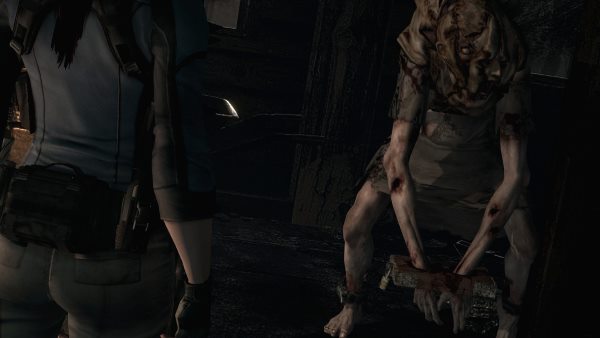
What ultimately sets REmake apart from other games mentioned when the “best survival horror game ever” topic springs up is just how well rounded it is. Something like Silent Hill 2 obviously is much more well written than REmake, but at the same time that game is largely broken from a gameplay standpoint. In Silent Hill 2, you can run past nearly every enemy in the game with ease and end up with hundreds and hundreds of bullets by the end. The same could not be said for REmake, as it is a far more challenging game with much more lethal enemies. Similarly, a game like Resident Evil 4 arguably has more refined, innovative, and thrilling gameplay mechanics than REmake; but it’s at the expense of nearly everything else that makes for a great horror game. When I say REmake is the best survival horror game of all time, I don’t mean it does each individual aspect better than any other survival horror game. I mean it does every aspect so well that it elevates it above all of its peers.
The Spencer Mansion truly is the birthplace of survival horror, and REmake refines the experience into a fine powder and makes it leagues better than the original game. A masterpiece doesn’t mean a game is perfect, more that it excels in everything that it sets out to do. REmake isn’t without its own flaws of course, but it is so good that it makes you forget all about its few shortcomings. The world of survival horror has never been on as full display as it was in REmake, and you owe it to yourself to spend a night in the Spencer Mansion.




